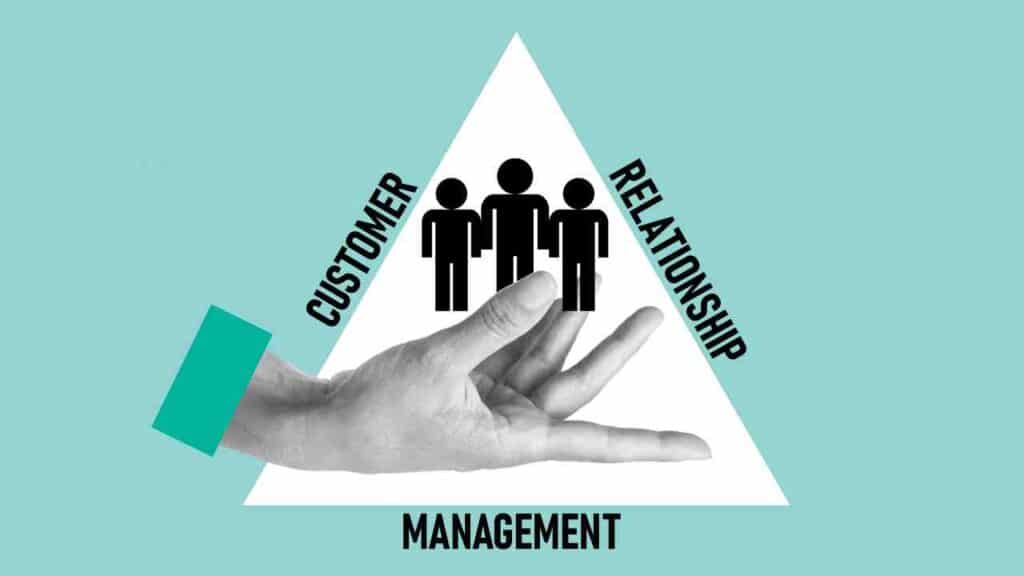Assimilating Third-Party Software with CRM

Customer Relationship Management (CRM) software has become an essential tool for businesses of all sizes. It helps companies manage their interactions with customers, streamline sales processes, and improve overall customer satisfaction. However, no CRM system can provide all the functionalities required by every business. This is where the integration of third-party software with CRM comes into play. By assimilating third-party software with CRM, businesses can enhance their CRM capabilities and tailor the system to their specific needs.
The Benefits of Assimilating Third-Party Software with CRM
Integrating third-party software with CRM offers several advantages for businesses:
- Expanded Functionality: CRM systems often lack certain features that are crucial for specific industries or business processes. By integrating third-party software, businesses can extend the functionality of their CRM system to meet their unique requirements.
- Improved Efficiency: Third-party software integration allows for the automation of various tasks, reducing manual effort and increasing efficiency. This can lead to time and cost savings for businesses.
- Enhanced Data Management: Integrating third-party software with CRM enables businesses to consolidate data from different sources into a single platform. This improves data accuracy, eliminates duplication, and provides a comprehensive view of customer information.
- Better Customer Experience: By integrating third-party software, businesses can gain deeper insights into customer behavior and preferences. This enables them to personalize interactions, deliver targeted marketing campaigns, and provide a superior customer experience.
Examples of Third-Party Software Integration with CRM
There are numerous third-party software applications that can be integrated with CRM systems to enhance their functionality. Here are a few examples:
Email Marketing Software
Email marketing software, such as Mailchimp or Constant Contact, can be integrated with CRM to automate email campaigns, track email opens and clicks, and manage subscriber lists. This integration allows businesses to seamlessly synchronize customer data between the CRM system and the email marketing software, ensuring accurate and up-to-date information.
Social Media Management Tools
Social media management tools like Hootsuite or Buffer can be integrated with CRM to monitor social media interactions, schedule posts, and track engagement metrics. This integration enables businesses to centralize social media data within their CRM system, providing a holistic view of customer interactions across different channels.
Accounting Software
Integrating CRM with accounting software, such as QuickBooks or Xero, allows businesses to streamline their financial processes. This integration enables the automatic synchronization of customer data, invoices, and payment information between the CRM system and the accounting software, eliminating manual data entry and reducing errors.
Case Studies: Successful Integration of Third-Party Software with CRM
Several businesses have successfully assimilated third-party software with CRM to achieve significant improvements in their operations. Let’s explore a couple of case studies:
Case Study 1: Company XYZ
Company XYZ, a software development firm, integrated project management software with their CRM system. This integration allowed them to track project progress, allocate resources, and manage client communication within their CRM platform. As a result, Company XYZ experienced a 20% increase in project delivery efficiency and a 15% reduction in customer response time.
Case Study 2: Company ABC
Company ABC, an e-commerce retailer, integrated live chat software with their CRM system. This integration enabled them to provide real-time customer support, track customer interactions, and capture valuable customer feedback. As a result, Company ABC saw a 30% increase in customer satisfaction ratings and a 25% decrease in customer churn rate.
Best Practices for Assimilating Third-Party Software with CRM
When integrating third-party software with CRM, it is essential to follow best practices to ensure a successful implementation:
- Identify Business Requirements: Clearly define the functionalities and features required from the third-party software to meet your business needs.
- Research and Evaluate: Conduct thorough research and evaluate different third-party software options to find the best fit for your CRM system.
- Ensure Compatibility: Verify that the third-party software is compatible with your CRM system and can seamlessly integrate without any technical issues.
- Test and Validate: Before fully implementing the integration, conduct extensive testing to ensure that the third-party software functions as expected and meets your business requirements.
- Train Employees: Provide comprehensive training to employees on how to effectively use the integrated system to maximize its benefits.
Get Your FREE 14-Day Trial and Take Your Business To The Next Level with an All-In-One Sales and Marketing Platform for businesses, agencies and marketers.
Assimilating third-party software with CRM can significantly enhance the capabilities of CRM systems and provide businesses with a competitive edge. By expanding functionality, improving efficiency, enhancing data management, and delivering a better customer experience, businesses can achieve improved sales and marketing outcomes. When integrating third-party software, it is crucial to follow best practices and carefully evaluate the compatibility and functionality of the software. With the right integration, businesses can unlock the full potential of their CRM system and drive success.
Visit https://SaasExpert.ca – Your All-In-One Sales and Marketing Platform for small businesses, agency owners, and marketers.
Learn more about “Unifying Third-Party Providers with CRM” right here.
Frequently asked questions about Assimilating Third-Party Software with CRM.

1️⃣ What does it mean to ‘assimilate’ third-party software with a CRM system?
Assimilating third-party software with your CRM essentially means integrating or ‘marrying’ external applications with your core Customer Relationship Management system. 💍 This enables data and functionalities from various platforms to work together seamlessly. For example, if you’ve got an email marketing tool, a social media dashboard, or even a customer service application, assimilating these with your CRM means all your data and operations can be viewed and managed from one central hub. 🌐 This can supercharge your workflow and make it more efficient!
2️⃣ Is it safe to integrate third-party software into my CRM system?
Great question! Security should always be a top priority. 🔒 The short answer is: it can be safe, provided you take the right precautions. Always choose third-party providers that are reputable and comply with security standards like GDPR, HIPAA, or whatever is relevant to your industry. Also, check to see if the integration options use secure methods like OAuth for authentication. If security concerns are above your pay grade, consider consulting with an IT security expert to ensure all your bases are covered. 🛡️
3️⃣ How will assimilating third-party software affect my team’s daily operations?
Ah, the human element—always crucial! 👫 Integrating third-party software into your CRM can actually make your team’s daily life much easier. Instead of hopping between multiple platforms, everyone can get what they need from one unified system. 🌟 This minimizes manual work, cuts down on errors, and can make training new team members more straightforward. However, it’s essential to provide proper training and resources for your team to adjust to the new setup. Change management strategies can come in handy here. 📚
4️⃣ Are there limitations on the types of third-party software that can be integrated?
Yes and no. 🤷♀️ It largely depends on your CRM’s architecture and flexibility. Some CRM systems offer extensive API options and have marketplaces filled with pre-built “plug and play” integrations. 🎮 Others may be more rigid and only offer a few built-in integrations. In more restrictive scenarios, custom development may be needed, which can be costly and time-consuming. So before you leap, make sure to evaluate the compatibility between your CRM and the third-party software you’re eyeing. 👀
5️⃣ Do I have to worry about data overload when assimilating third-party software?
Good catch! Data overload can be a concern. 📊 When you’re bringing in data from multiple platforms into one CRM, the sheer volume can be overwhelming. Too much data can lead to “analysis paralysis,” where your team may find it challenging to derive meaningful insights. 😵 The key is to be selective about what data you integrate and to set up proper filters and dashboards to make sense of it all. Some advanced CRMs also offer AI and machine learning features to help you sift through the data haystack to find the actionable needles. 🤖






